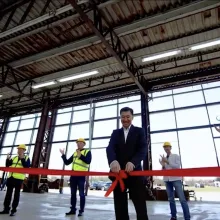Sora, a new generative AI video tool from Open AI, is named after the Japanese word for sky. Is the sky the limit? Last year, the company gave early access to 300 artists, some of whom later denounced the company’s product release as artwashing. OpenAI responded with a series of exclusive promotional screenings of artist-made films for industry executives in New York, Los Angeles, and Tokyo. What might this all mean for the documentary field? We decided to run our own experiment. To test the limits of Sora, we prompted it with the taglines from the six most recent Oscar-winning documentaries. We showed the resulting 15-second silent clips to a panel of seven documentary luminaries over Zoom.
Doc Tech
Welcome to The Synthesis, a new monthly column exploring the intersection of Artificial Intelligence and documentary practice. Over the next year, co-authors shirin anlen and Kat Cizek will lay out ten (or so) key takeaways that synthesize the latest intelligence on synthetic media and AI tools—alongside their implications for nonfiction mediamaking. Balancing ethical, labor, and creative concerns, they will engage Documentary readers with interviews, analysis, and case studies. The Synthesis is part of an ongoing collaboration between the Co-Creation Studio at MIT’s Open Doc Lab and WITNESS.
"Block Party": Veteran game developers Navid and Vassiliki Khonsari of iNK Stories are building an open world that reflects their own community of Brooklyn, NYC, populating it with AI-powered NPC avatars in the likeness of the duo’s real-life neighbors. Documentary spoke to the duo about this experiment and its profound implications for the documentary field.
In our bid to make this 40th anniversary issue somewhat of a time capsule, we asked our members to send in photographs—new and old—with the cameras
In 2018, a junior soccer team and their assistant coach went into a nearby cave in Thailand’s Chiang Rai province. It was a week before the cave was
"You never forget your first time seeing a whale," director Joshua Zeman says in The Loneliest Whale: The Search for 52. His was as a kid working on a

Dujuan Hoosan is a precocious 10-year-old from Mparntwe (Alice Springs), Australia, considered a healer by his Arrernte tribe and a delinquent by his colonialist-minded school. For more than two years, Australian documentarian Maya Newell followed Dujuan, capturing both quotidian moments and broader patterns of racism, with special focus on the educational and juvenile detention systems.

The most nerve-wracking sequence in David France’s Welcome to Chechnya is, without doubt, the rescue of Anya.

When shooting vérité, Jesse Moss is typically a one-man-band. But his latest film—codirected with his wife, Amanda McBaine—demanded a full orchestra. Boys State required 28 crew members, to be exact, including an octet of cinematographers.

Cutting Class is a new column that focuses on a specific aspect of the post-production process—breaking down a scene editorially, and delving into
